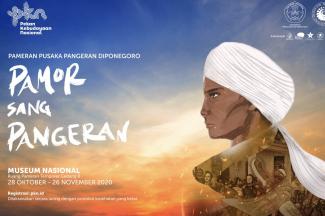One aspect of decolonising museum practice is the repatriation of objects that were collected by colonial powers and displayed in national museums in their capital cities like London, Paris, Berlin, or Amsterdam. Although notable cases like the Parthenon sculptures (‘Elgin’ marbles’) remain unresolved and are a continuing source of tension, museums have begun to engage with this process, often through campaigns led by representatives of Indigenous groups. Human remains stored for decades in European museum are being returned to the places from which they were taken, including to First Nations communities in Australia. Dutch museums too are starting to address the legacies of colonialism, both through exhibitions such as Slavery: ten true stories and Revolusi! Indonesia Independent at Rijksmuseum in Amsterdam, and through the repatriation of objects.
Diponegoro’s kris
The 2020 return of the kris dagger belonging to Prince Diponegoro is a significant example of repatriation. Diponegoro was the leader of a five-year struggle against Dutch colonial rule – the Java War – which ended in 1830. After his surrender to Hendrik Merkus de Kock, the Lieutenant Governor General of the Dutch East Indies, the prince was exiled and died in Makassar at the age of 69. The kris was then given to the king of the Netherlands, William I, and kept in the Royal Curiosities Cabinet before ending up in the collection of the Museum Volkenkunde (Museum of Ethnology) in Leiden.
The return of the kris had been a long time coming. The proclamation of Indonesian independence in 1945 after the surrender of Japanese forces who had occupied the Dutch East Indies during the Second World War was recognised by the Dutch in 1949. A cultural treaty was signed by Indonesia and the Netherland in 1968 and some material was returned in the mid 1970s, including objects related to Prince Diponegoro. However, the kris was missing. Only after further research over the following decades was the prince’s kris identified and finally retuned in 2020. The kris was part of an exhibition at the Museum Nasional (Indonesian National Museum) curated by Nusi Lisabilla Estudiantin held in 2020, called Pameran Pusaka Pangeran Diponegoro: Pamor sang Pangeran (The Prince Diponegoro Heritage Exhibition: A Prince’s Legacy).
